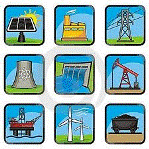Department of Agricultural Economics: Undergraduate Research

Op-Eds from ENSC230 Energy and the Environment: Economics and Policies
Date of this Version
Fall 12-19-2016
Document Type
Article
Citation
Op-Ed from ENSC 230. Energy and the Environment: Economics and Policy, University of Nebraska-Lincoln, Department of Agricultural Economics, Fall 2016
Abstract
Renewable sources will be the future of energy production for the United States. Clean sources of energy like wind and solar have been the topic of conversation for quite some time, and now they’re starting to show their ability to compete economically with fossil fuels.
Even as renewable sources of energy begin to show their gusto, they are still a part of a relatively new industry and new industries always need a little help getting off the ground. There are some forms of aid being provided for renewable sources of energy, like the production tax credit or PTCs, where the federal government provides a little help to renewable energy producers, but this is nothing in comparison to the billions being spent on fossil fuel subsidies. This does not even begin to take into account the negative impacts that fossil fuels have on our planet.
The idea of a subsidy is to give a little extra boost to benefit an industry that appears to be at a disadvantage. This is a great idea when used correctly, but last time I checked, the fossil fuel industry is one of the most profitable industries in the world. That hardly sounds disadvantaged to me. When profitable industries are allowed to reap the benefits of tax breaks, they will just continue to increase profits with federal subsidies as their security blanket.
A major reason renewable energy producers are having a hard time catching a larger portion of the market is because they’re competing against highly subsidized fossil fuel prices while they themselves are not receiving the help that a budding industry deserves. Clean energy incentives are typically set and revaluated in 10-year increments while fossil fuel subsidies have been written into the tax code with no expiration date. Intangible drilling cost credits are an example of a subsidy that has been around since the early stages of oil well drilling in 1913. This subsidy, which still exists today, basically pays oil producers to drill new wells even if the well may not produce any oil.
Since incentives for renewable production are not permanent, they are not as appealing to investors because there is less certainty the federal assistance will be there in coming years. This is the opposite case for fossil fuel industries where investors know the subsidies will still be there for the entirety of their investment, which makes for a much safer bet. If renewable subsidies are given a longer lifespan, investors would be more comfortable making those investments and the money would begin to pour in.
These subsidies on high emission fossil fuels will only increase our reliance on dirty sources of energy and make it much more difficult to transition to a low emission society. Politicians continue to say they want a clean, low emission America, but continue to encourage and literally pay for dirty sources of energy while putting renewables and the well being of future generations on the back burner. According to a 2013 study by World Development, if global fossil fuel subsidies were cut, there would be a 21% reduction in global carbon emissions leading to a 55% reduction in fossil fuel pollution related deaths. This alone is reason enough for the United States to begin phasing out fossil fuel subsides and set the standard for the rest of the world to follow.
The big problem that is faced when fossil fuel subsidies are cut is the loss of jobs in the industry. This problem can be solved by subsidizing other industries if they choose to build new infrastructure and create jobs in areas negatively affected by the loss of fossil fuel related jobs. This will lead to sustainable economic growth in areas that previously relied on one industry for a majority of their employment.
If we continue to spin our tires and subsidize irresponsible energy practices, clean and renewable energy will continue to be a secondary fuel source and there will be no incentive to innovate. The world is changing its views on energy and how it impacts the health of our planet, so it’s about time the United States got up to speed and accepted the fact fossil fuels aren’t the answer to our long-term energy demands.
Included in
Environmental Indicators and Impact Assessment Commons, Natural Resources and Conservation Commons, Oil, Gas, and Energy Commons, Other Environmental Sciences Commons

